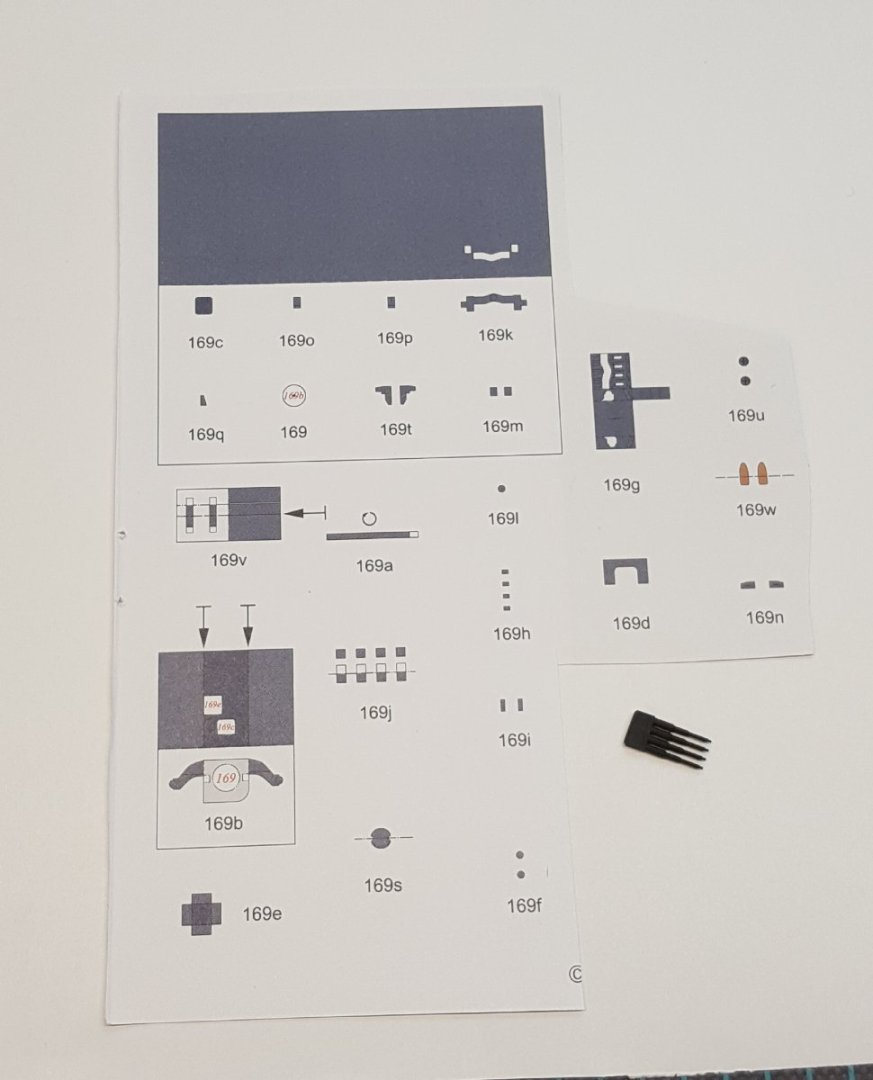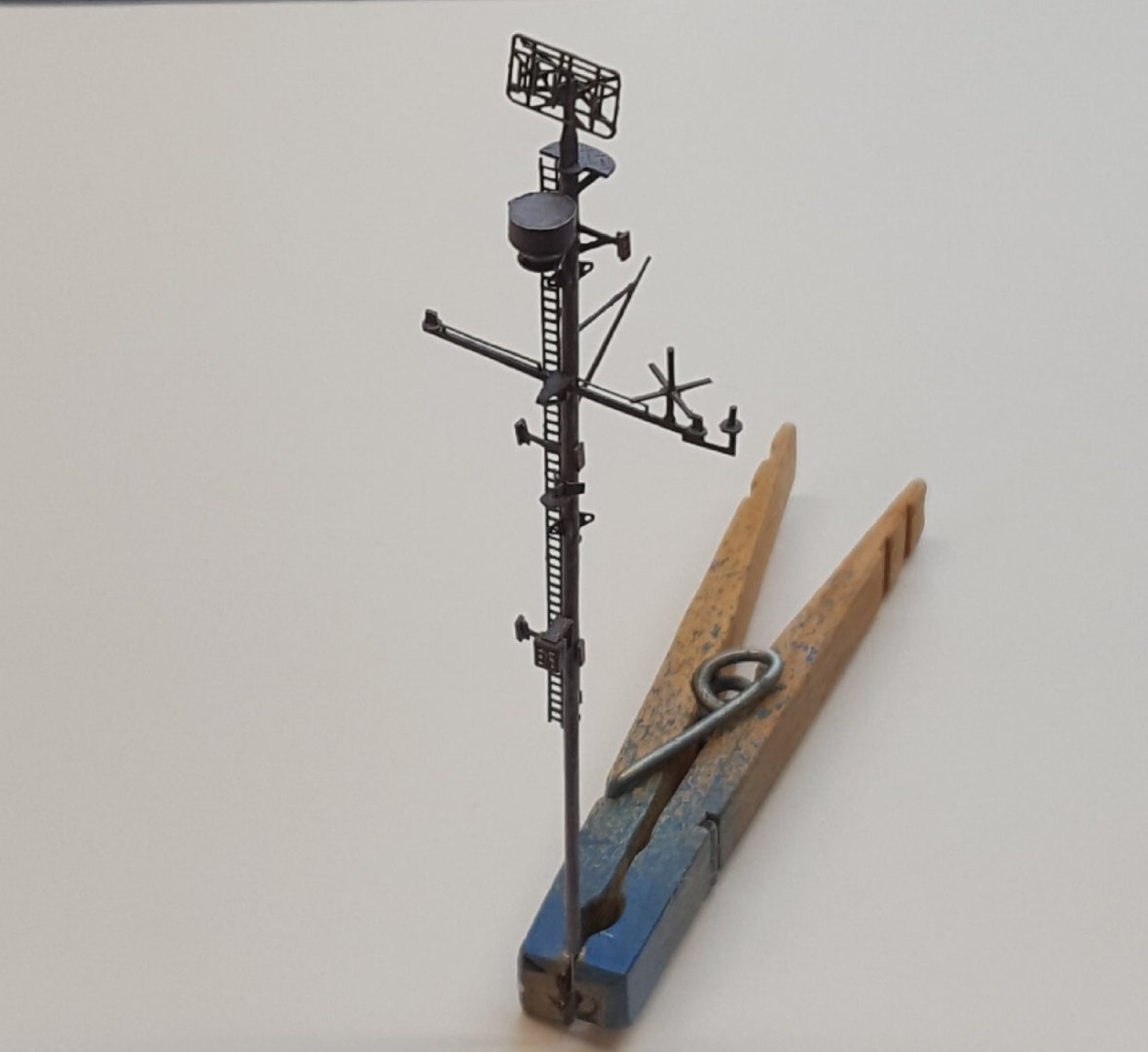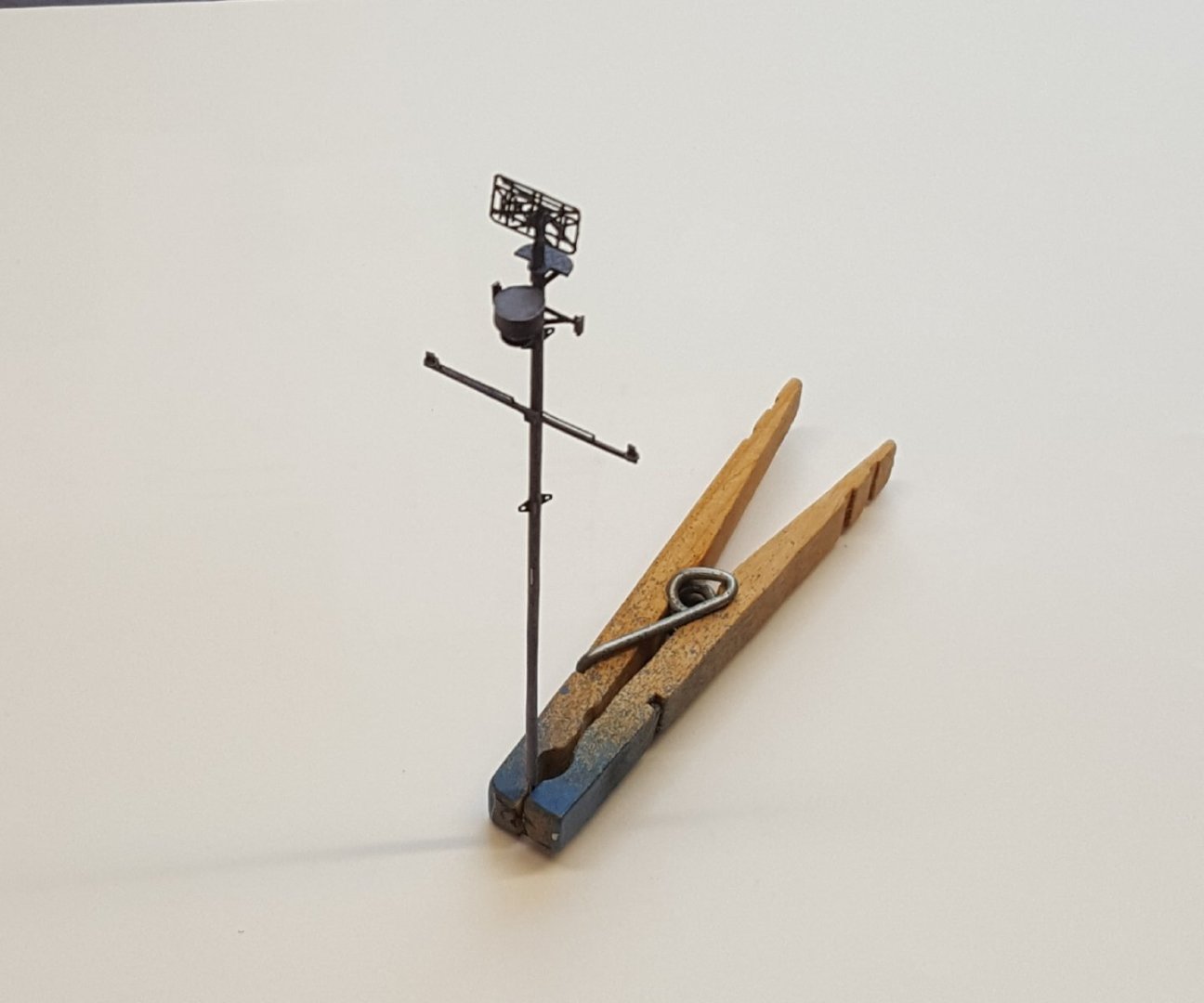-
Posts
10,529 -
Joined
-
Last visited
Content Type
Profiles
Forums
Gallery
Events
Everything posted by ccoyle
-

Bristol F.2B WW1 Fighter by CDW - FINISHED - Eduard - 1:48 Scale
ccoyle replied to CDW's topic in Non-ship/categorised builds
Yep, that's where I ordered from as well. -
Oop, yeah -- forgot about that one. That's the same guy that does the 3"/50s. I may have to email him and see if I can arrange something. My wallet might object. 😬
-

On Hold - Nakajima Type KO 3 by CDW - Answer - 1:33 Scale - CARD
ccoyle replied to CDW's topic in Non-ship/categorised builds
For me, the issue with scissors is control. Working with a blade is much more precise. -

Bristol F.2B WW1 Fighter by CDW - FINISHED - Eduard - 1:48 Scale
ccoyle replied to CDW's topic in Non-ship/categorised builds
What the heck -- I ordered both, fine and medium. -
Before attempting to tackle the daunting task of rigging, I decided I will take a little detour and try making some of the guns first. The 20 mm mounts are 3D printed, so no issues there. The 3"/50 resin set included only barrels -- depending on how the construction of the mounts goes, I may opt to replace those with complete 3D printed guns available from another producer (they're not cheap). As far as I can find, though, no one makes a 3D printed 1.1" quad mount, so that one I will have to make mainly out of card in any case. Here's the parts sheet and printed barrel set. Yeah, this is gonna be fun. 🤔
-

Bristol F.2B WW1 Fighter by CDW - FINISHED - Eduard - 1:48 Scale
ccoyle replied to CDW's topic in Non-ship/categorised builds
I just had an eye exam a couple of months ago, during which my ophthalmologist informed me, at the ripe old age of 59, that in addition to my numerous floaters, astigmatism, 20-30 vision (corrected) in one eye and 20-40 in the other, I now have "all three" kinds of cataracts in their early stages of formation. No doubt this is from years of squinting at tiny modeling elements. 🙄 I may just have to pull the trigger on some Infini line -- I'm a sucker to try new things. Your comment about the medium vs. fine makes me wonder whether fine may not be better -- at stand off viewing distances, 1/250 wire rigging does really kind of disappear. What are your thoughts? -

Bristol F.2B WW1 Fighter by CDW - FINISHED - Eduard - 1:48 Scale
ccoyle replied to CDW's topic in Non-ship/categorised builds
I'd like to get some more info on the Infini line, with which I'm unfamiliar. I looked it up online just now and see that it comes in a variety of colors and diameters. The line that they recommend for 1/200 scale ships is half the diameter (and twice the price) of fine EZ Line, and supposedly stretches, same as EZ line. Do you know if it is round in cross-section (EZ line is flat), and how well does it glue to different materials? -
Thanks, Egilman. I will be giving much thought to how to do this task. Some of the obvious hardware, e.g. sheaves and turnbuckles, is nearly impossible to replicate at this scale, and the attachment points are not always plainly marked (not helped by the dark camouflage colors, especially the deck). I will be moving ahead slowly -- might even need to take an airplane break before tackling this!
-
Welcome! Lovely display, though with all the seismic activity in Turkey I hope your display is anchored somehow! 😬
-

Pavel Nikitin 1:32 Captain John Smith's Shallop - Ships of Pavel Nikitin
ccoyle replied to James H's topic in REVIEWS: Model kits
Certainly appears to be a great value. -

Bristol F.2B WW1 Fighter by CDW - FINISHED - Eduard - 1:48 Scale
ccoyle replied to CDW's topic in Non-ship/categorised builds
Yep. As has been stated elsewhere, toss in the joys of flying around in a highly flammable, unarmored, unheated, unpressurized, castor oil-spewing target with no self-sealing fuel tanks, no fire suppression system, and no parachute, and you can see why the life expectancy was so short. -
Step 25: Mast I have been making slow progress on the mast -- a few bits here, a few bits there. The instructions recommend assembling the mast on the model. Building off the model is listed as an option. I have chosen an in-between method. Many of the athwartships elements can be added and allowed to dry with the mast lying flat. Eventually, though, some fore-and-aft elements are going to have to be added, and at that point the mast will have to be held vertical, as seen in the photo. When I get to the point where I think I can no longer handle the mast without knocking stuff off, I'll add it to the model and then add the final bits. The main mast is a length of steel rod clad in paper; the bits so far added bring the parts total to 37. Still plenty more to do! Oh, and Egilman's drawings confirm something I at first thought was kind of odd: the navigation lights on the mast are perpendicular to the waterline, not parallel to the mast rake.
-
NOW HEAR THIS! Friends, MSW requires that your gallery images be posted in named gallery albums. Loose gallery images (i.e., not in albums) are periodically cleaned out (i.e., DELETED). Please note the relevant instruction posted at the top of each gallery: That means that @Mirabell61, @Jason Builder, @Richardp6, @RacerToo, @reklein, @Mark Lynch, @East Coast Oyster Sharpie, @Menne Kosian, @Rvandg, @Frank L., @cliff coppen, @Carlo Farina, @Peter6172, @Angler84, @closehaul, @bear, and @cihat karatas: YOU ARE CURRENTLY AT RISK OF HAVING YOUR LOOSE GALLERY IMAGES DELETED. Please move them into albums soon! If you need help with creating an album, contact a moderator. Thank you!
-

Bristol F.2B WW1 Fighter by CDW - FINISHED - Eduard - 1:48 Scale
ccoyle replied to CDW's topic in Non-ship/categorised builds
That was my first guess when I saw his picture. My daughter works for a breeder (Crockett Doodles), and that's one of the 'designer dogs' they offer. I sometimes tease my daughter that back in our day they were called "mutts," but there's no denying they can be very cute. -

Hello from Minnesota, a few modeling questions
ccoyle replied to Scratchie's topic in New member Introductions
Welcome aboard, Scratchie! -
I also just found out that there is a volume on England in the Conway Maritime Press AOTS series.
-
Ah, I see now. Part of the difficulty in determining the orientation stemmed from the fact that most WW2-era photos online, even large ones, are quite grainy, and the fine details of the "mattress spring" type air search radar don't show up well in the photos. On top of that, most of the photos I did find seemed to have caught the radar pointing aft instead of forward, hence the confusion. What I do think I'm going to need is some kind of reference material that shows a much more detailed view of the rigging details (still searching for that). The diagrams in the kit are practically useless, because in the provided views the lines cross each other numerous times, as well as crossing other ship details such as railings, so it is nearly impossible to tell which lines lines attach where and where they route to. Gonna be a fun job. 😧
-
Your images tipped me off to the fact that I glued the air search radar antenna on backwards. 😥
About us
Modelshipworld - Advancing Ship Modeling through Research
SSL Secured
Your security is important for us so this Website is SSL-Secured
NRG Mailing Address
Nautical Research Guild
237 South Lincoln Street
Westmont IL, 60559-1917
Model Ship World ® and the MSW logo are Registered Trademarks, and belong to the Nautical Research Guild (United States Patent and Trademark Office: No. 6,929,264 & No. 6,929,274, registered Dec. 20, 2022)
Helpful Links
About the NRG
If you enjoy building ship models that are historically accurate as well as beautiful, then The Nautical Research Guild (NRG) is just right for you.
The Guild is a non-profit educational organization whose mission is to “Advance Ship Modeling Through Research”. We provide support to our members in their efforts to raise the quality of their model ships.
The Nautical Research Guild has published our world-renowned quarterly magazine, The Nautical Research Journal, since 1955. The pages of the Journal are full of articles by accomplished ship modelers who show you how they create those exquisite details on their models, and by maritime historians who show you the correct details to build. The Journal is available in both print and digital editions. Go to the NRG web site (www.thenrg.org) to download a complimentary digital copy of the Journal. The NRG also publishes plan sets, books and compilations of back issues of the Journal and the former Ships in Scale and Model Ship Builder magazines.








